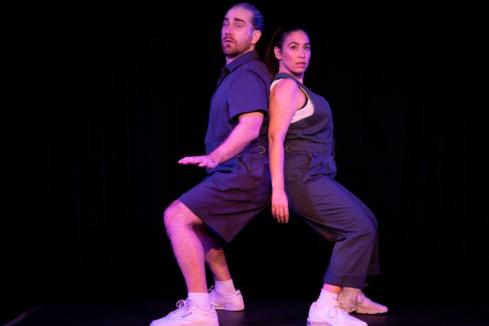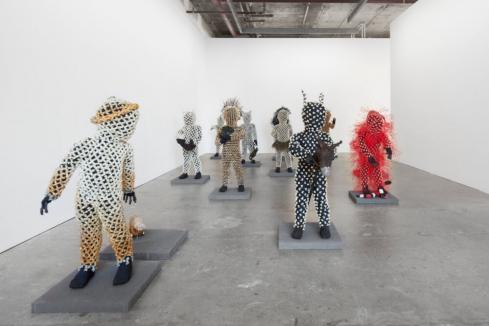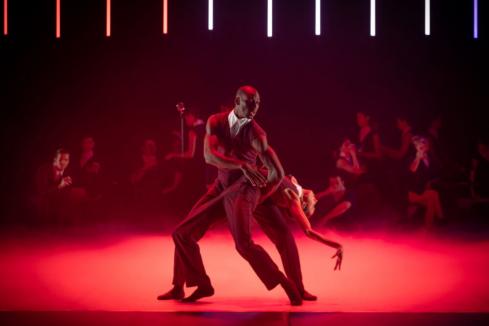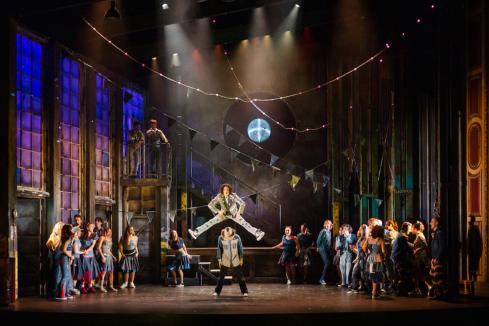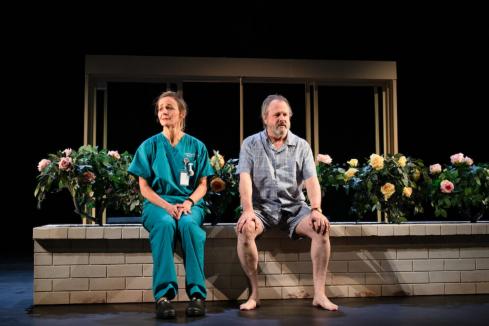
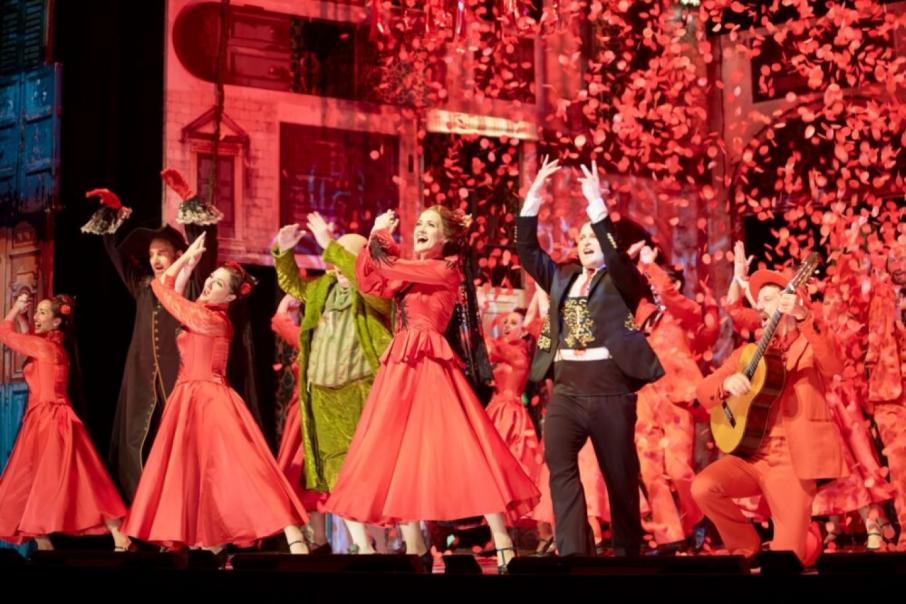
Debuting over 200 years ago, Rossini’s comic masterpiece The Barber of Seville (Il barbiere de Siviglia) has remained in almost continuous production ever since. You have to work really hard for it to fail, but it has been known to. The humour of the piece is deeply embedded in the music itself, along with the text, and introducing extra bits of knockabout comedy is really just a distraction; the best productions get out of the way of the actual opera and enhance what’s already there.
This production by Lindy Hume (previously aired in Brisbane, Seattle, and Auckland, and on this occasion directed by Jason Barry-Smith) does go some way to derailing the proceedings with gratuitous funny business, but overall the opera itself stays on its well-oiled path to total musical enjoyment.
Hume’s initial conceit, and a good one, is to locate the proceedings in a world of doors and windows. During the overture, projections of such façades appear over the curtain, which on rising, reveals a set contained by domestic entrances at different levels. Tracy Grant Lord’s set and costume design is not all that specifically Spanish, but suggests a domestic locale of comings and goings, intrigues and gossip which is what the opera is about. Some Iberian touches are evident in costuming, but the overall impression is a colourful, sun-filled realm, again exactly as suggested by the music. Whirling lights accompanied many of the crescendi, which had a varying reception amongst the audience. Hume’s great talent is moving people around on a stage, and this production was no exception.
One of the interesting things about the COVID epidemic (alluded to briefly in the opera) is that it has forced a wider use of Australian talent in local companies than hitherto. Tonight’s conductor was Perth born Burhan Güner, leading the always excellent West Australian Symphony Orchestra. Right from the first bar of the overture it was clear we were in good hands, musically. While kudos goes to all the players, the strings made a particularly nice clean impression. The West Australian Opera Chorus were also up to form, particularly the men, who have the most to do.
The title role was performed by local charismatic baritone James Clayton, who depicted Figaro as something of a larrikin friend-to-all. While not exactly a bel canto stylist, his warm resonant voice filled the role. Brigitte Heuser, hailing from New Zealand originally and having made her mark there and overseas, was a lively Rosina, but her voice is rather a puzzle. Her technical approach and flexibility were excellent but there seemed to be little integration between a quite sparkly top and a rather snarly bottom. Emerging Australian tenor Michael Petruccelli as Count Almaviva was somewhat uncertain at first, but his voice soon settled into a pleasing Italianate style, with great bel canto technique.
This is not the first occasion Warwick Fyfe has portrayed Dr Bartolo, and his exquisite comic timing combined with a grandly mellifluous voice made this role a killer. Don Basilio does not have a great deal to do on his own apart from deliver the deliciously mean aria “La calumnia”, which was performed with smooth vocal insinuation by Robert Hofmann and an accompaniment of tinkling teaspoons.
The part of Berta the maid is, unusually for Rossini, always a worry; I have seen several excellent mezzo sopranos suffer from direction that gives them nothing to do but sneeze. This evening’s Berta was given quite a bit to chew on without having to sneeze, including a budding romance with Ambrogio, an essentially silent role, well portrayed by Brendan Hanson, and culminating in a suave dance in the finale. Berta was sung with entertaining flair by Naomi Johns, who enlivened her aria no end with a startling geschrei in the middle of it.
While The Barber is a great vehicle for individual vocal display, it is also a wonderful assembly of ensembles. Several duets, a trio, a quintet in Act II and the finales all call for co-ordinated vocalising, all happily realised in this performance. The concluding scene of the opera was a thorough treat, ending with a bursting cascade of red petals and streamers from above the stage.
The Barber of Seville ran from April 17 to 24.
Seesaw Magazine publishes reviews, news and features about the WA arts scene.





